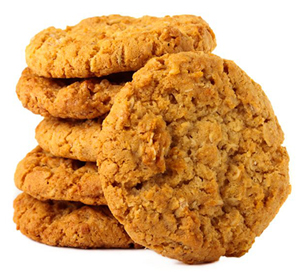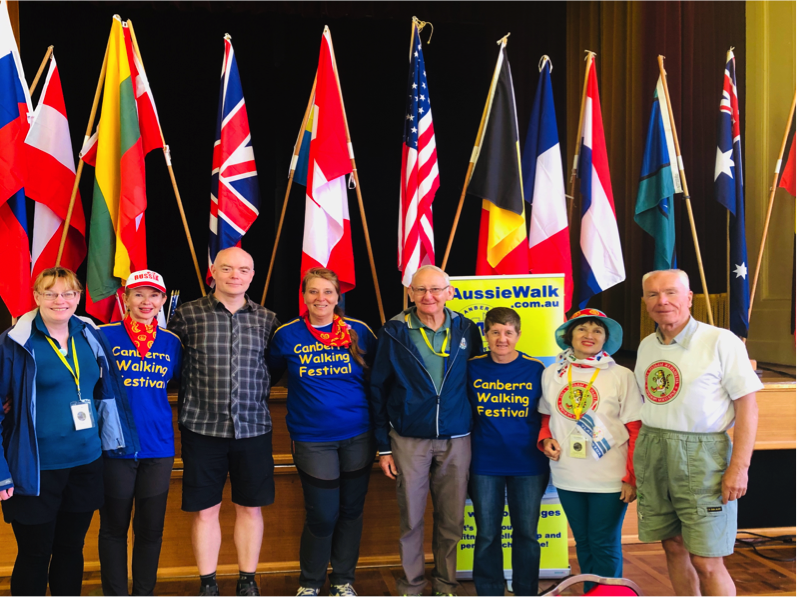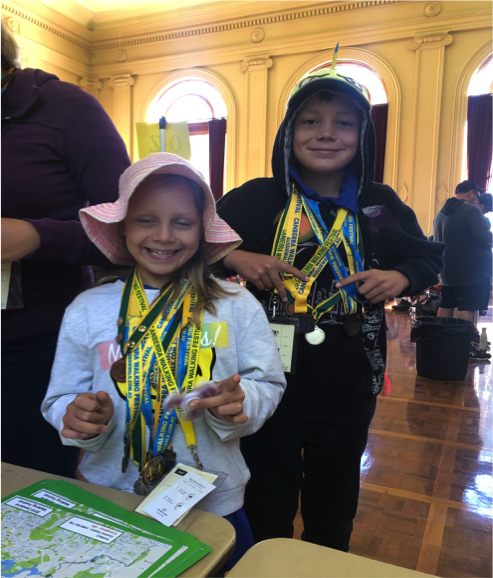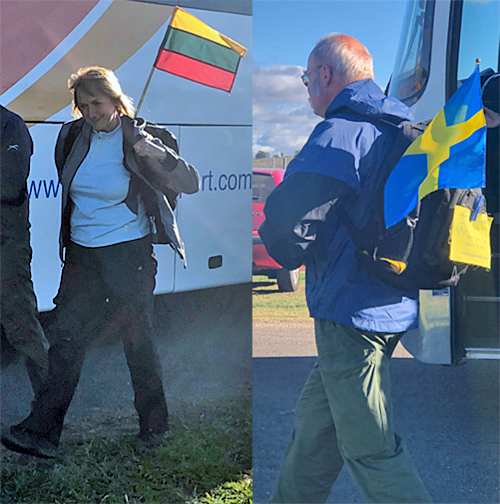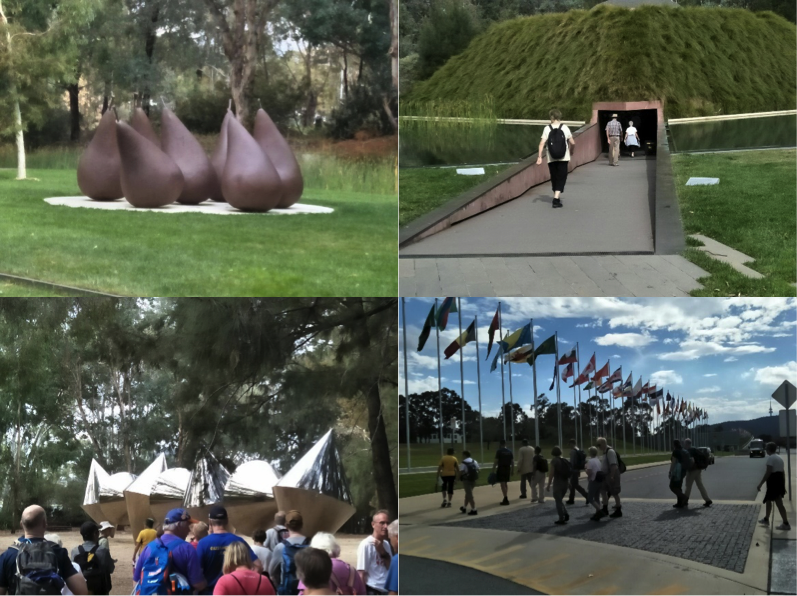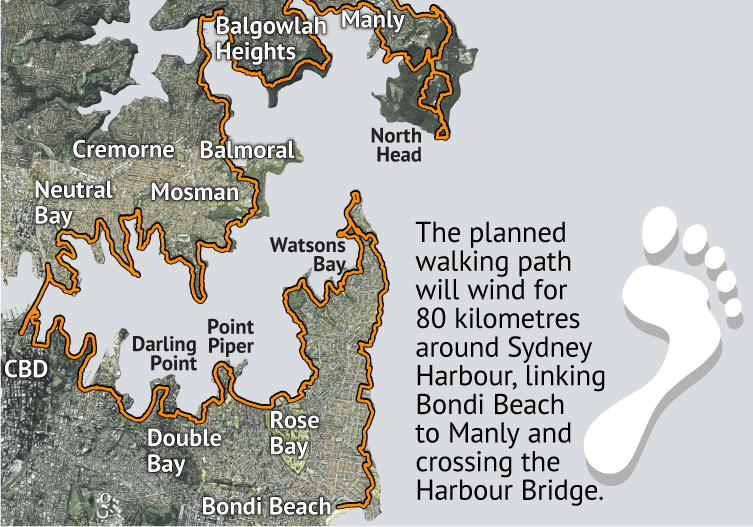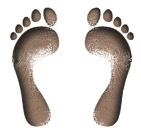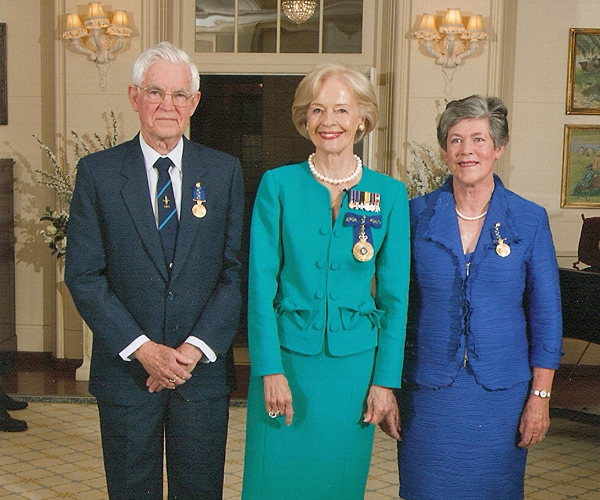
Harry and Kathleen Berg with Governor-General Quentin Bryce in September.
Did you know that Harry and Kathleen Berg have received the Medal of the Order of Australia (OAM) for service to recreational walking?
The honour was announced last Queen’s Birthday (June 2013) and presented in September.
The Bergs were nominated for their exceptional commitment to promoting the health and social benefits of walking as well as to encouraging international friendship and understanding. After experiencing multi-day walking events in Europe, Harry and Kathleen established the Canberra Two Day Medal Walk in 1992. Their aim was to promote walking, to provide a healthy, enjoyable recreational activity and to encourage walkers to achieve a personal challenge. They also sought to encourage international friendships. This aim was notably advanced in 1997 when the Canberra Two Day Walk was accepted into the IML Walking Association.
The Association has strict requirements for events to be recognised by the IML. Through its award system, walkers are encouraged to participate in IML events around the world. IML walks are held in 26 countries throughout Europe, Asia and the Americas. The Canberra Two Day Walk, now known as the Canberra Walking Festival, attracts hundreds of walkers from across Australia and overseas. Participants choose walks of various distances from 5km through 42km (marathon). Ample time is allowed for walkers to enjoy the sites of Canberra, and even our local walkers find something new to see.
Many walkers return each year because they enjoy the varied and attractive courses, the social atmosphere, the quality of the organisation and the opportunity to meet and interact with overseas walkers. Many international friendships have been formed and Australian walkers have taken the opportunity to renew those friendships by taking part in IML events overseas.
The Canberra Walking Festival has been very successful in supporting the IML’s motto: “May walking bring us together.” Our event has received consistently positive feedback from our overseas participants. In addition, the event has done much to promote the health benefits of walking for all ages, as well as promoting programs with similar aims, such as those managed by Heart Foundation Walking. All this did not happen without a lot of hard work by Harry and Kathleen!
Harry’s personal contribution has included:
–Founding President of the Canberra Two Day Walk Association (the organising committee of volunteers) and occupying that position for 15 years followed by active membership on the committee since then.
–Creating and maintaining a database of participant information.
–Processing all registration and preparing start cards.
–Developing, measuring and mapping walk routes; preparing detailed directions and signage.
–Preparing the Control Centre and all equipment for the events.
Kathleen’s personal contribution has included:
–Secretary of the Canberra Two Day Walk Association and maintaining an active membership on the committee since then.
–Managing the 50+ volunteers needed to run the event.
–Guiding the planning of the event and related activities, including obtaining government approvals.
–Dealing with overseas inquiries; providing accommodation and travel advice.
–Assisting overseas walkers during the event to ensure their stay in Australia is enjoyable and rewarding.
Over the past 22 years, the Canberra Two Day Walk has been enjoyed by nearly 10,000 walkers. In addition to the Canberra Walking Festival, the Bergs have introduced Internationaler Volkssport Verband (IVV) walks in Australia. IVV walks are available in Canberra, Sydney, Melbourne, Lakes Entrance, Bairnsdale and Wodonga. Harry and Kathleen regularly host overseas groups wishing to undertake IVV walks in Australia. Their promotion of IVV walks here has encouraged many Australian walkers to take part in IVV walks overseas.

